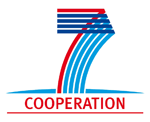Introduction to PGR Secure
The goal of agrobiodiversity conservation, unlike other forms of conservation, is not only the conservation of species and intra-specific genetic diversity related to agriculture, but also to promote its sustainable use in facilitating agricultural production. Although significant progress has been made in the conservation and management of plant genetic resources for food and agriculture (PGRFA) globally and in Europe, there remain two critical areas where progress has been limited: (a) the use of conserved agrobiodiversity by breeders and (b) the systematic conservation of crop wild relative (CWR) and landrace (LR) diversity. Specifically for breeders and CWR / LR diversity conservationists, the status quo is no longer an option as human-induced climate change is threatening the maintenance of the very diversity breeders require to mitigate the adverse impact of climate change. Conventionally, breeders have used their own lines and stocks to generate novel crop varieties, but these materials are relatively genetically uniform and it is now increasingly recognized that CWR and LR offer the breadth of genetic diversity required by breeders to meet the novel challenges of climate change and rapidly changing consumer demands.
The aim of PGR Secure is therefore to research novel characterization techniques and conservation strategies for European crop wild relative and landrace diversity, and further, to enhance crop improvement by breeders, as a means of underpinning European food security in the face of climate change. To achieve these goals, PGR Secure has four research themes:
- Investigation of novel characterization techniques, including: (1a) Genomics, phenotyping and metabolomics, (1b) Transcriptomics, (1c) Focused Identification of Germplasm Strategy.
- CWR and LR conservation, including: (2a) Europe-wide CWR inventory, (2b) Exemplar national CWR inventories, (2c) European CWR strategy, (2d) Europe-wide LR inventory, (2e) Exemplar national LR inventories, (2f) European LR strategy.
- Facilitating breeders’ CWR and LR use, including: (3a) Identifying breeders’ needs, (3b) Meeting breeders’ needs, (3c) Integration of conservation and user communities, (3d) Pre-breeding – channelling potential interesting germplasm into commercial breeding programmes.
- Informatics development, including: (4a) CWR and LR inventory information web availability, (4b) Novel characterization information web availability, (4c) Inter-information system operability.
The research requires the integration and collaboration of European policy, conservation and breeding sectors and the products will be disseminated Europe-wide to all appropriate stakeholders. The project, initiated by the European Cooperative Programme for Plant Genetic Resources (ECPGR) In Situ and On-Farm Conservation Network involves 42 European countries, as well as both large and smaller European plant breeding companies.




